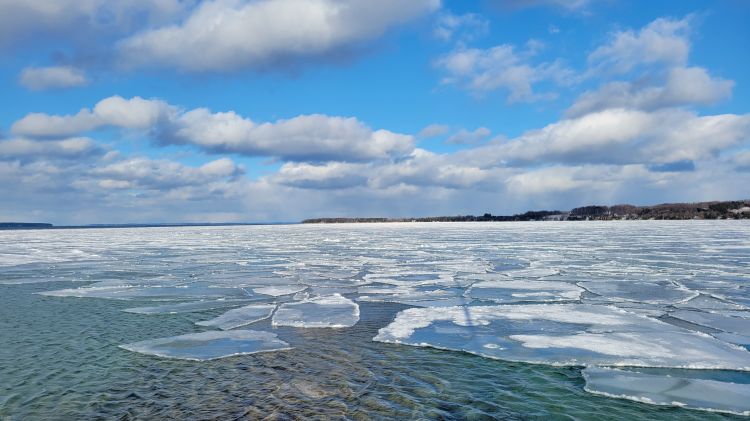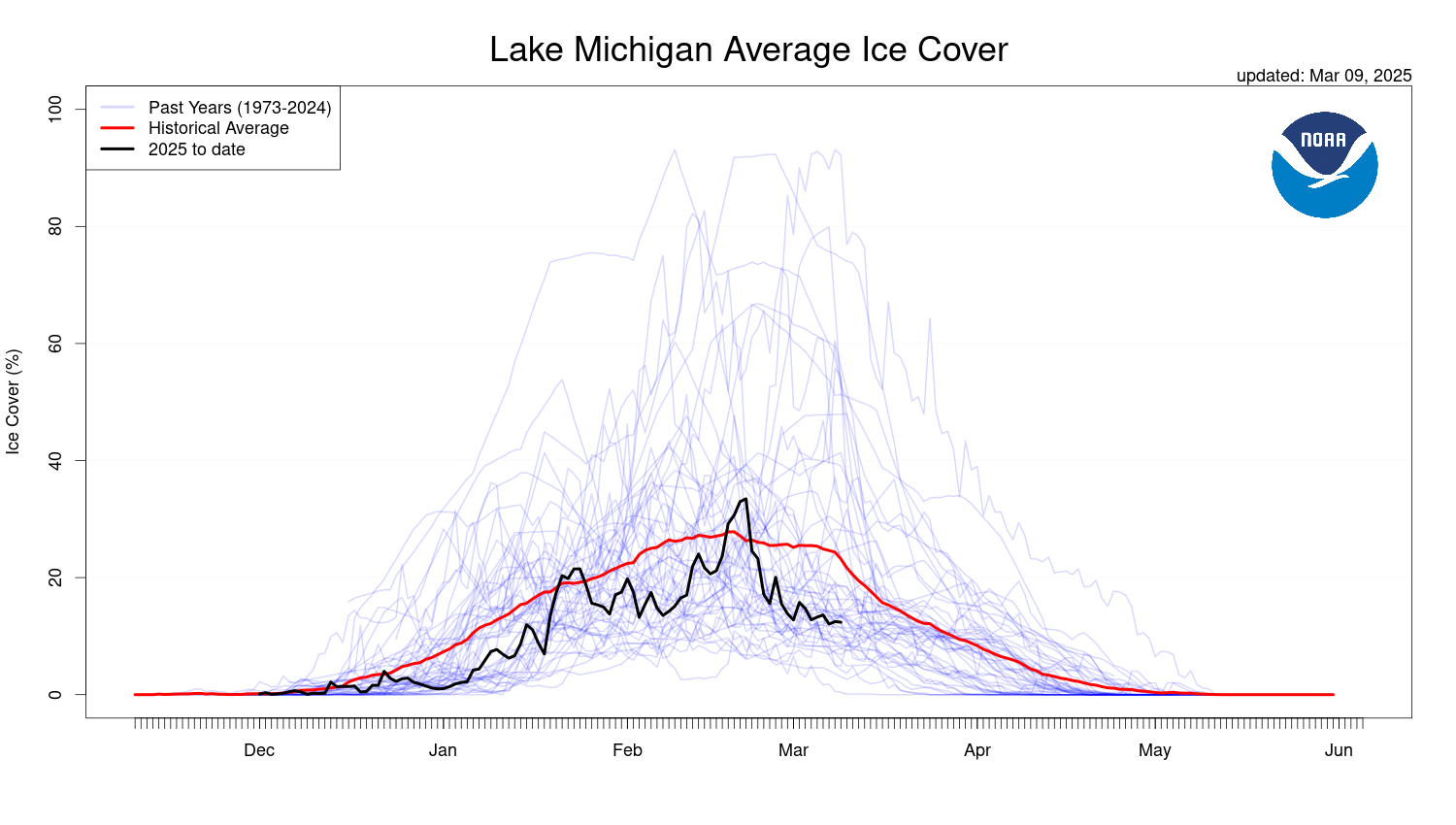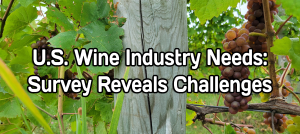Assessing Michigan grapevine cold hardiness: February-March 2025 field observations
Assessment of 2025 dormant season grapevine cold hardiness, focusing on varietal differences in cold tolerance and implications for vineyard management. The findings provide insights to enhance vineyard sustainability amidst challenging winter conditions.

Grapevine cold hardiness is vital for vineyard sustainability, especially in regions like Michigan that experience severe winter temperatures. Building upon our previous work, “Understanding Grapevine Cold Hardiness: Mechanisms, Management, and 2024-2025 Field Observations,” this article presents the latest findings from February 2025, focusing on varietal differences in cold tolerance and implications for vineyard management.
February 2025 cold hardiness evaluations
During this dormant season, we conducted extensive field assessments to determine the lethal temperature at which 50% of primary buds are killed (LT50) across various grapevine varieties. The data collected in February 2025 are summarized below:
Table 1: Cold hardiness assessment results and LT50 temperatures for the dormant season of 2024-2025
|
Variety |
Jan. 16, 2025 |
Jan. 30, 2025 |
Feb. 14, 2025 |
Feb. 24, 2025 |
March 3, 2025 |
March 10, 2025 |
|
Chardonnay |
-24.3 |
-22.6 |
-23.5 |
-24.4 |
-22.8 |
-22.9 |
|
Pinot Gris |
-25.8 |
-26.3 |
-24.7 |
-25.9 |
-24.5 |
-24.5 |
|
Riesling |
-24.3 |
-23.3 |
-21.0 |
-22.3 |
-23.4 |
–22.8 |
|
Merlot |
-22 |
-24.8 |
-23.9 |
-23.9 |
-23.7 |
-23.2 |
|
Pinot Noir |
-26.9 |
-25.4 |
-26.2 |
-24.5 |
-26.1 |
-24.6 |
|
Refosco |
-22.3 |
-22.0 |
-21.9 |
-20.1 |
-21.4 |
-19.9 |
|
Cabernet Franc (high tunnel) |
-25.0 |
-25.3 |
-24.9 |
-23.6 |
-24.4 |
- |
|
Cabernet Franc |
-25.7 |
-24.7 |
-26.2 |
-24.8 |
-25.5 |
-24.9 |
|
Teroldego |
-25 |
-23.7 |
-24.6 |
-23.8 |
-21.35 |
-22.2 |
|
Pinot Blanc |
-24.6 |
-24.8 |
-22.3 |
-23.4 |
-25.14 |
-23.3 |
Note: Negative LT50 values indicate sub-freezing temperatures at which 50% of primary buds are killed.
Cold injury considerations and assessments
Under normal growing conditions—where vines experience minimal stress from pests, disease pressure, drought, overcropping, or undercropping—we have not observed significant cold injury in Michigan wine grape varieties. Additionally, a healthy grapevine canopy must remain intact through the end of the growing season to support optimal cold hardiness.
However, if one or more of these stress factors were present during the past growing season, grapevines may have sustained some level of cold injury. To assess potential damage, growers are encouraged to take the following steps:
- Examine Buds: Cut buds and inspect them for signs of freezing.
- Evaluate Bud Mortality: Determine the percentage of buds that have been damaged.
- Adjust Bud Numbers: Based on assessment results, retain an appropriate number of buds per vine to compensate for cold damage.
By following these measures, growers can mitigate the effects of cold damage and optimize vine performance in future growing seasons.
Recommended pruning strategies based on bud mortality
To aid growers in adjusting their pruning practices based on bud mortality levels, the following guidelines are suggested:
|
Bud Mortality |
Suggested Pruning Strategy |
|---|---|
|
10-15% |
No adjustment needed. |
|
20-50% |
Leave more buds and prune to four to five bud spurs. |
|
60% |
Double the standard pruning strategy. |
|
>60% |
Minimal or no dormant pruning; focus on reestablishing vine structure. |
When bud mortality exceeds 70%, the focus should shift towards reestablishing the fruit-bearing zone to ensure balanced vine growth during spring and summer. Severely damaged vines are likely to generate new shoot growth from base buds, increasing shoots per vine and overall leaf area. Pruning efforts should prioritize damaged cordons and trunks to restore vine structure. In cases where trunks have sustained severe injury, replacement may be necessary. Managing emerging shoots, or suckers, from the vine base is crucial to promote leaf area recovery and proper trellis development.
Impact of lake effect loss on vineyards
Recent observations indicate that the East Grand Traverse Bay did freeze in mid-February 2025, though likely not for many days. However, the West Grand Traverse Bay did not fully freeze out to Power Island, despite coming close. Historically, this freeze event has been monitored by organizations such as the Chamber of Commerce and the Watershed Center Grand Traverse Bay to understand long-term freezing trends. The frequency of complete freezing provides an indication of how much lake effect moderation is lost in any given winter.
Additionally, Lake Michigan's overall ice cover data—recorded since 1972—offers a broad perspective on freezing trends. While there is some correlation between this lakewide data and conditions in Grand Traverse Bay, smaller subsets of the bay may show different localized trends. The reduced lake effect due to partial or minimal ice coverage could have significant implications for vineyard cold exposure, emphasizing the need for growers to stay informed and implement adaptive management practices.
Understanding the major effect of ice on the Great Lakes is crucial because it impacts a range of societal benefits provided by the lakes, from hydropower generation to commercial shipping to the wine industry. The amount of ice cover varies from year to year, as well as how long it remains on the lakes. The Great Lakes Environmental Research Laboratory (GLERL) has been exploring the relationships between ice cover, lake thermal structure, and regional climate for over 30 years through development, maintenance, and analysis of historical model simulations and observations.
NOAA's Great Lakes Environmental Research Laboratory (GLERL) monitors long-term ice cover changes due to global warming and studies their effects on climate patterns, lake levels, water movement, temperature structures and spring plankton blooms. Weekly ice cover imaging, initiated by the Canadian Ice Service in 1973 and enhanced by the U.S. National Ice Center in 1989, provides critical data. GLERL's CoastWatch program offers near real-time and retrospective satellite observations and in-situ Great Lakes data to support environmental science and decision-making.
For vineyard owners, these data sources can provide valuable insights into changing climatic conditions and help predict potential cold damage due to reduced lake effect protection. By staying informed and utilizing available resources, growers can implement more effective adaptive strategies to mitigate risks associated with fluctuating ice cover and its impact on vineyard sustainability.

Implications for vineyard management
Understanding the cold hardiness profiles of different grapevine varieties is essential for making informed decisions regarding vineyard practices:
- Varietal Selection: Growers in regions prone to severe winters should consider planting varieties with demonstrated cold hardiness.
- Pruning Strategies: Adjust pruning practices based on varietal susceptibility to cold injury. For less hardy varieties, retaining additional buds can compensate for potential bud loss due to cold damage.
- Site Selection and Management: Utilize sites with favorable microclimates and implement practices that enhance cold hardiness, such as proper canopy management and balanced fertilization.
By integrating these insights into vineyard management plans, growers can mitigate the risks associated with winter temperatures and promote the sustainability of their grape production.
For more detailed information on grapevine cold hardiness and management practices, refer to our previous article: “Understanding Grapevine Cold Hardiness: Mechanisms, Management, and 2024-2025 Field Observations.”



 Print
Print Email
Email




